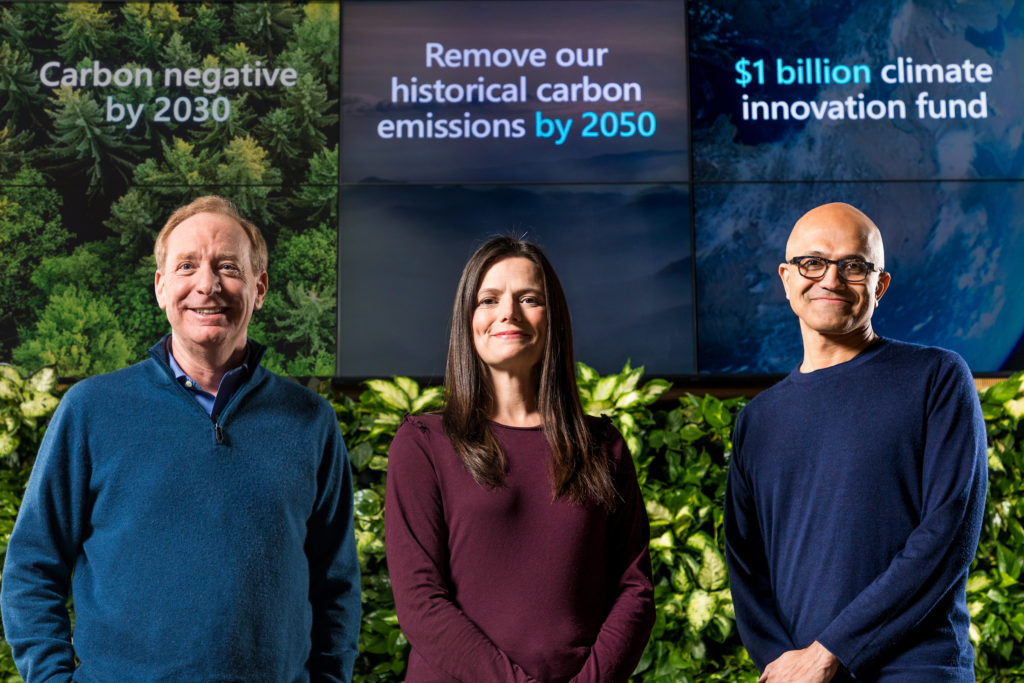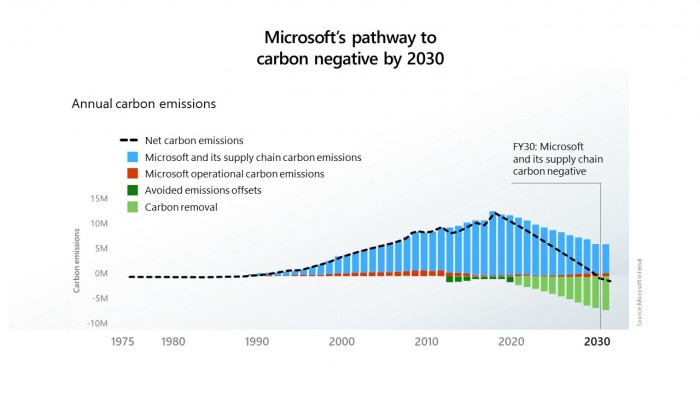Microsoft will invest $1 billion into carbon reduction and removal technologies

Microsoft plans to establish a $1 billion fund dedicated to “carbon reduction, capture, and removal technologies,” amid a broader commitment to clean up the software giant’s emissions across its corporate history by 2050.
It’s one of the largest funding commitments ever to methods of sucking carbon dioxide out of the air, which most research shows will be a necessary part of any plan to prevent catastrophic levels of global warming. Funding for direct-air-capture startups like Carbon Engineering, Climeworks, and Global Thermostat have been climbing but have been limited to the tens of millions of dollars range to date.
In a statement to MIT Technology Review, Microsoft stresses the money will go to more than direct air capture, adding that it will fund the build-out of projects as well as research and development. The money will be invested over the next four years.
The company’s language leaves room for many other possible investment areas, including natural systems for removing and storing carbon dioxide, such as forestry projects, or technologies that prevent it from escaping power plants in the first place. For that matter, the phrase “carbon reduction” in the announcement means some of the funds could simply go to solar, wind, and other renewables projects as well.

Microsoft didn’t specify its total historic emissions, but said its operations will pump out 16 million metric tons of carbon dioxide this year, directly or indirectly. The company says it will offset its climate pollution stretching back to 1975 through a combination of direct air capture and natural systems—including tree plantings, new soil management practices, and a largely theoretical approach known as bioenergy with carbon capture and storage.
Experts say that natural systems can play a big role in drawing down greenhouse gases, but it’s notoriously difficult to account for them in an accurate and reliable way.
Noah Deich, executive director of Carbon180, and other observers says Microsoft’s announcement on Thursday goes well beyond the standard carbon neutrality commitments of other major corporations, because it incorporates historic emissions, sets specific benchmarks for reductions, and puts a large amount of money behind the efforts.
Deep Dive
Climate change and energy
The problem with plug-in hybrids? Their drivers.
Plug-in hybrids are often sold as a transition to EVs, but new data from Europe shows we’re still underestimating the emissions they produce.
Harvard has halted its long-planned atmospheric geoengineering experiment
The decision follows years of controversy and the departure of one of the program’s key researchers.
Why hydrogen is losing the race to power cleaner cars
Batteries are dominating zero-emissions vehicles, and the fuel has better uses elsewhere.
Decarbonizing production of energy is a quick win
Clean technologies, including carbon management platforms, enable the global energy industry to play a crucial role in the transition to net zero.
Stay connected
Get the latest updates from
MIT Technology Review
Discover special offers, top stories, upcoming events, and more.